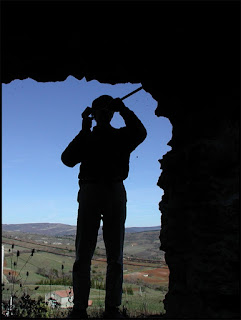What will the paysans think of your chateau rescuing shenanigans.
What will the paysans think of your chateau rescue shenanigans
In the English speaking world calling someone a peasant is a term of abuse. You could say that ‘peasants’ in the UK are an unprotected and disappeared species. In France the word for peasant, ‘paysanne’, is a badge of honour. If you are a ‘vrai’ Paysanne’, you are a keeper of secrets and skills of the countryside, holding the fort against a rising tide of rubbish. Rubbish food, adulterated dairy, radiated lettuces. A modern life of keyboards and fashionable ideas in a pre-fabricated world.
Paysannes still pick great bundles of vegetation every afternoon for their rabbits and measure the rainfall. They have their own winter wood growing, cut, drying, stacked and split. Some things are best not left to others. Whopper crops of artichokes, beans and tomatoes are transformed into exquisite preserves. Dried mushrooms gathered at ancestral glades in the woods dry by the fire, a stock of home made confiture always at the ready.
It is a kingdom of its own kind. The industrious French paysannes eat like kings. Their lives are resplendent with the pleasures that really matter to the French. There is barely a CEO in French corporate life who doesn’t cherish the dream of a paysanne life. Just the good bits of course.
If it had not been for the skillful hand of generations of small farmers I would never have waded into the project of renovating Chateau St Ferriol. It was they who tended, tilled and forested the hills around St Ferriol, the chestnut and oak forests, the valley dappled with vineyards, orchards, potagers, shepherd’s huts. Groves of almond trees, pomegranate, quince and poplar that ultimately seduced me.
I have a very vivid recollection of a moment while James was pleading with me to sign the compris de vente and commit to the purchase. I took a walk up to the gates of the cemetery, a little above the village then I looked down at the great abandoned chateau. The roof had been cheaply rebuilt in the 1970’s when an ugly breeze block gable replaced the gently sloping hip roof, the hip roof itself a 17th century innovation ‘It will have to be done,’ I thought to myself ‘This is surely madness’. Then the red iron soaked earth, the vast pink and blue sky throwing light upon the thousands of shimmering shades of green and gold, the order of the paysanne sickle and savoir faire in its blaze of glory swayed me. It wasn’t the chateau. ‘What a perfect spot for madness’, I thought to myself and trotted down the hill to tell James I was in.
The paysannes have been supportive in the village. Glad, in any case, to have the chateau rescue spectacle brought directly to their village. And have no doubt, it is theirs! Hard work is respected. I am absolutely sure that we have amused them very much.
We chateaunauts have all been nourished by the encouragement of the paysanne. The Jean de Florette nightmare scenarios of rivalry and sabotage surely simmer too, sometimes, but if you buy a chateau in France you will more probably meet a paysanne neighbour in your garden, with a basket overflowing with surplus vegetables and a humour brimming with curiosity. If you can have a chat and appreciate the bounty of the land, share a joke and a grateful moment, it could be the beginning of a very special friendship.




Rennes le chateau, Sister to St Ferriol on the nearby hill

Hip roof

'Pignon' or Gable roof

The Mayor of Rouvenac has planted cherries along the roadside. A daring staand for the old ways in the tyranny of modern notions of tidy


Comments